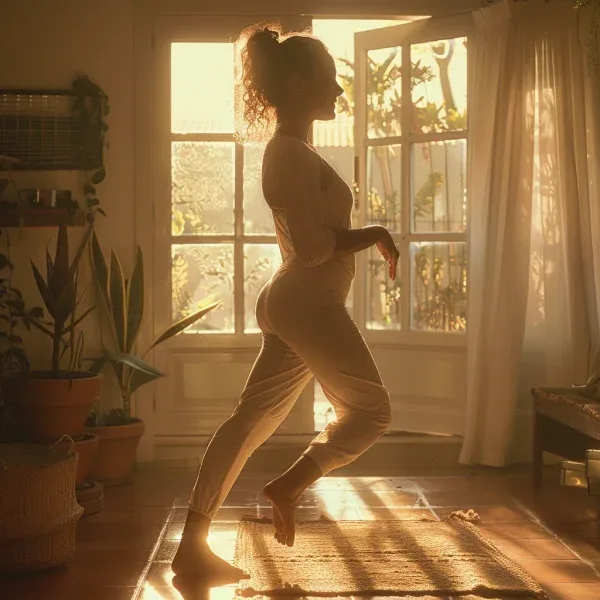by Clarissa Hartley

Ever contemplate the myriad of subtle actions our bodies conduct to keep us on our feet instead of flat on our faces? Most likely, the thought hasn’t even crossed your mind. Nevertheless, our innate sense of balance tirelessly works behind the scenes enabling us to move and interact with our environment. Being aware of it and how to improve it now will shield your physical well-being in the future.
Consider the symphony of coordination that ensues as you cross from one end of the room to the other, deftly avoiding objects and keeping upright. It’s a ballet of balance mechanisms that ceaselessly operate together. Losing this balance, be it due to age or a health condition, can have an overarching impact on our body.
Focusing on bolstering our balance now not only fortifies our bodies in the present but safeguards our mobility in years to come.
Unlocking the Science of Balance
Balance seems almost magical, doesn’t it? Well, it isn’t. Our ability to stay upright and steady revolves around three vital elements:
- Vision: Sight is the primary informant of our balance. Ever experienced momentary disorientation when you closed your eyes? That’s your vision’s role in play, giving you spatial awareness and helping adjust your orientation with the help of vertical and horizontal cues in your surroundings.
- Proprioception: In layperson’s terms, it’s the body’s internal GPS for joints. Tiny receptors within your joints and surrounding ligaments communicate with your brain, indicating the position of your joints and their speed of movement. Voila, balance is achieved!
- Vestibular System: This tiny wonder within your inner ear functions as your inbuilt gyroscope. It detects head position and movement by tracking the motion of fluid and minuscule hairs within the ear. Changing your head’s position moves this fluid, causing signals to be sent to your brain to recalibrate your balance.
Can Age Affect Balance?
Yes, unfortunately, our balancing capacity can decline with age. Gradual vision impairment, joint arthritis stifling proprioception, and muscle mass reduction can all chip away at our balance. This can make you more susceptible to falls and injuries.
Becoming less stable can make seemingly mundane tasks daunting and impact your confidence and movement frequency. This, in turn, could breed muscle weakness and joint stiffness.
But don’t let the inevitable wear-off of your balance with age dishearten you. Our expert-approved exercises will help you improve your balance effectively, preparing you for a life of vitality and agility.
Improving Your Balance?
Want to bolster your balance? Try these balance-enhancing manoeuvres recommended by leading health experts:
- Incorporate simple balance exercises into daily routine. Standing on one foot during teeth brushing, for instance!
- Sit upright on a chair or stability ball, engaging your core. Slowly elevate one foot from the floor and lower it, switching legs progressively.
- Introduce core-strengthening exercises in your workout routine. They’ll support your spine, improve posture, and enhance full-body stability.
- Feel adventurous? Perform a single-leg knee dip (or one-legged squat) or stand on one leg while casually tossing a ball.
- Wish to trick your brain while having fun? Try spelling your name backward or do times tables while standing on one foot!
You’ll notice a significant difference in your balance quickly. So why not roll up your sleeves, put on your workout attire, and embark on your journey to improved balance today?
Exercises to Improve Your Balance
You don’t have to dedicate hours to balance training for it’s worth every minute, promising big fitness gains. Consider doing the following six-move circuit at the conclusion of a gym or home training session to give your balance a boost:
How to perform this circuit:
Execute the exercises in sequence, resting for 45 seconds between moves. As your balance improves, increase your sets to keep your body challenged.
For Beginners: 1 set of 10 reps
Intermediate: 2 sets of 10 reps
Advanced: 3 sets of 10 reps
Circuit moves include: Flamingo, Stability Ball Kneel, Stability Ball Bridge, Woodchop, Star Stance, T-Stance. Spend some time learning the details and execution of these exercises and you’ll soon notice a considerable improvement in your balance.
balance, improving balance, balance exercises, body balance, balance workout, maintaining balance, stability, proprioception, vision impact on balance, vestibular system, balance and aging
Leave a Reply